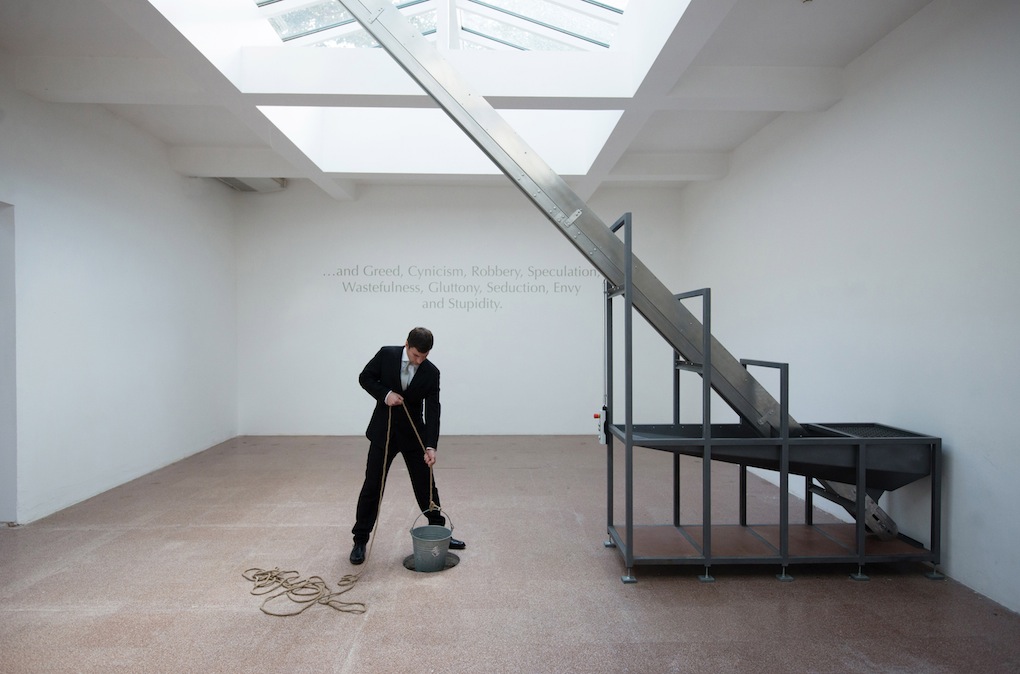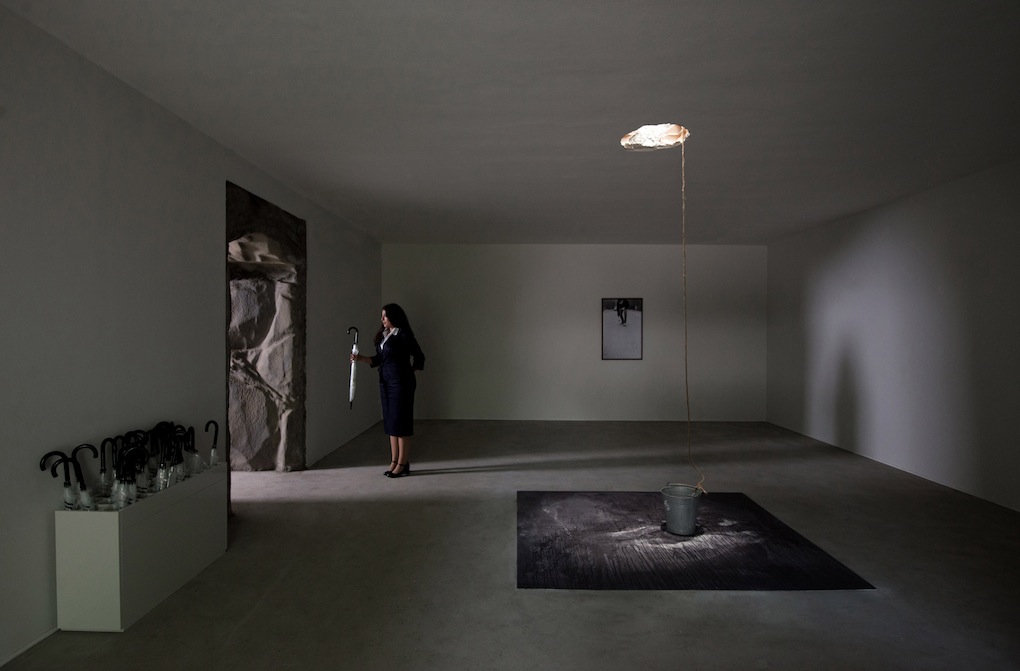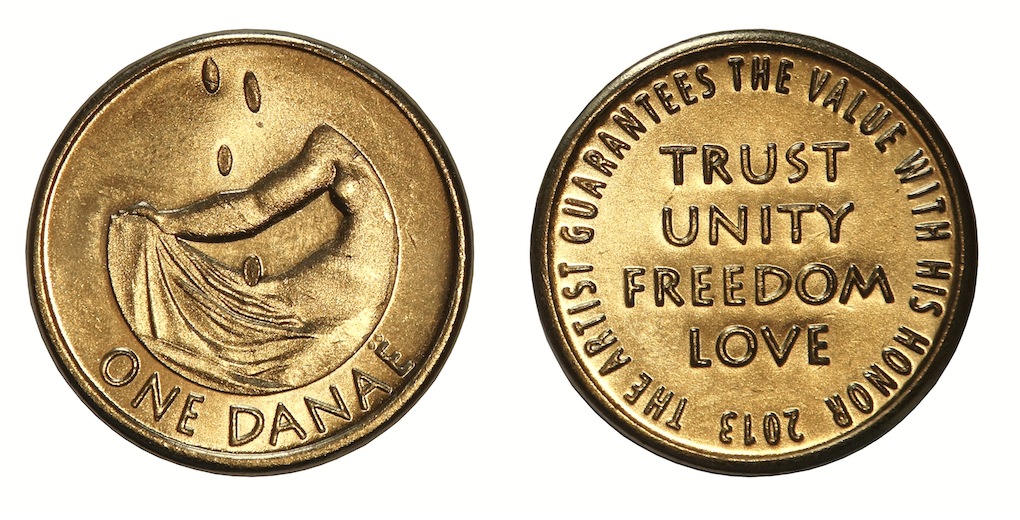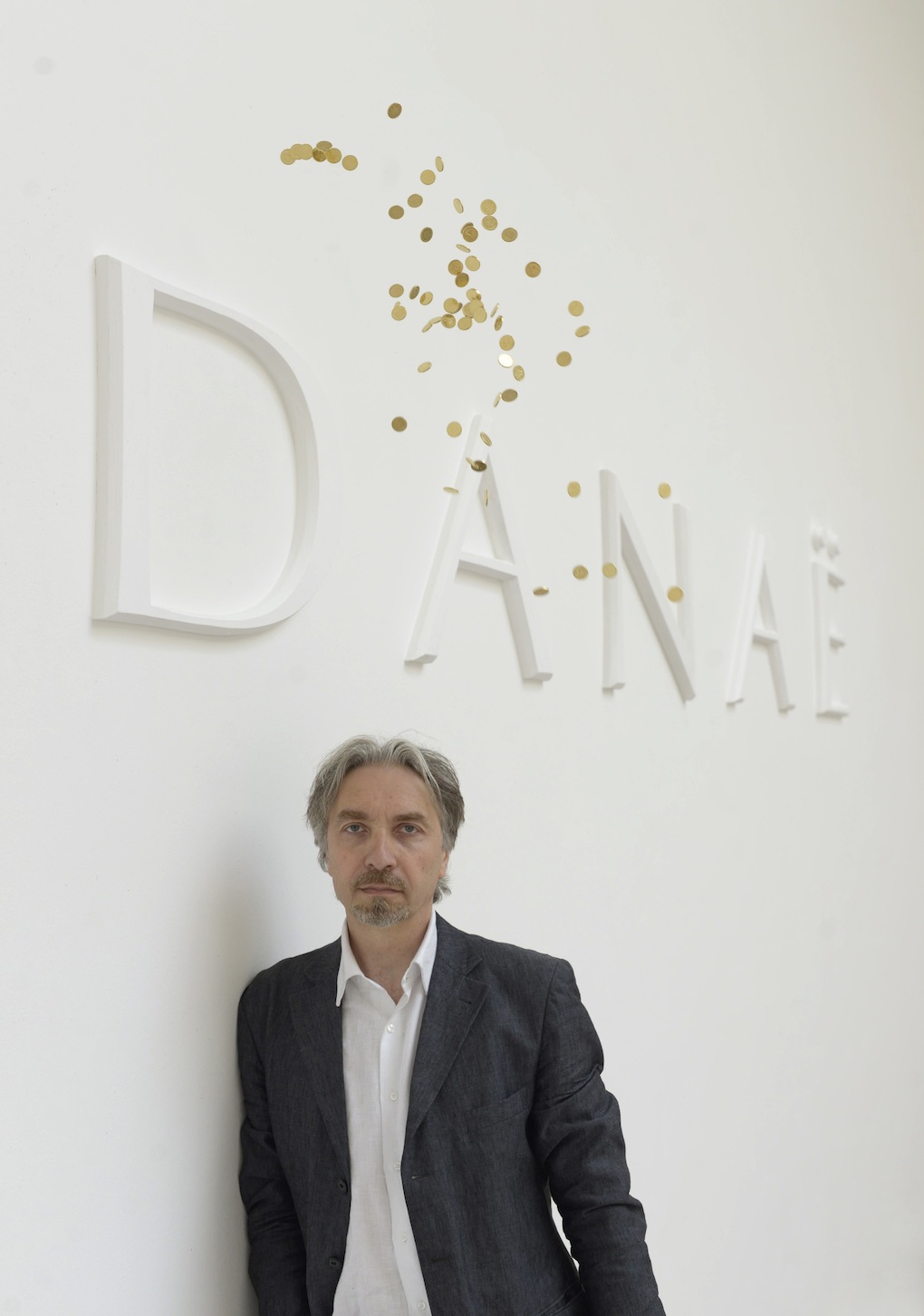2 October 2013
[…] it is pointless trying to decide whether Zenobia is to be classified among happy cities or among the unhappy. It makes no sense to divide cities into these two species, but rather into another two: those that through the years and the changes continue to give their form to desires, and those in which desires either erase the city or are erased by it.
Italo Calvino, Invisible Cities (chapter 2: Thin cities, 2)
Act 1
A young man, dressed in jacket and necktie, is seated astride a beam. His expression is gloomy, pensive. He looks like a bank clerk, or perhaps a stockbroker. His mind is a tangle of numbers, exchange rates and currency values, smeared with resentment and bitterness. While he reflects, nursing his rancor, he throws peanut shells on the ground—a slow, mechanical, almost cruel gesture. Every so often he glances at a shower of gold coins: perhaps it is the money he has lost today? An inscription on the nearby wall declares: “Gentlemen, time has come to confess our Rudeness, Lust, Narcissism, Demagoguery, Falsehood, Banality, and Greed, Cynicism, Robbery, Speculation, Wastefulness, Gluttony, Seduction, Envy, and Stupidity.” Will he ever find redemption?

Vadim Zakharov, Danaë, 2013. Photo by Daniel Zakharov.
Act 2
Capitalism is an economic system that allows the accumulation of wealth in a convertible and re-investable form: money. It is like a mechanical device, operated by recyclable tokens. The coins circulate and are dispersed; the mechanism is potentially perpetual. Men control its operation—it is they who are able to decide whether to stop it or not.
Act 3
There is an altar rail with cushions for kneeling on the upper floor: it faces directly onto the lower level, as if it were a windowsill around the perimeter of a crater. From here, the men observe a copious rain of golden coins. They are kneeling while they watch. They confess their greed and rapacity. They look on impotently as the money falls from above, money that they are no longer able to gather.

Vadim Zakharov, Danaë, 2013. Photo by Daniel Zakharov.
Act 4
The myth tells how Zeus, one night, turned himself into a shower of gold to impregnate Danaë, shut up by her father Acrisius in a bronze tower. Here, the myth seems to take on concrete form. Coins rain down from the top of the building; on the lower floor women shelter from the rain under transparent umbrellas. Only they are allowed to pass through the opening and enter the room filled with coins: the men, kneeling, watch their movements from above. The metal rain strikes them, just like Danaë—with the difference that they can avoid it, covering themselves or taking shelter elsewhere.

Vadim Zakharov, One Danaë, moneta/coin, 2013. Photo by Daniel Zakharov.
Act 5
On the coins are engraved the words TRUST, UNITY, FREEDOM, LOVE. Positive values, of which the female gender—in the system devised by the artist—is the bearer. Only women are entrusted with the task of collecting the coins. It is up to them to decide whether or not to feed the mechanism described above, by putting coins in the bucket that will be pulled up to supply the machine. It is they who, by doing so, bring more human, rational and constructive principles into the circuit. And grant atonement to the men.*
* Danaë is the title of the work created by Vadim Zakharov for the Russian Pavilion. The artist has defined the work as a “Performance in Five Acts.”

Vadim Zakharov, 2013. Photo by Daniel Zakharov.
Follow Federico Florian on Google+, Facebook, Twitter.
Dello stesso autore / By the same author: ArtSlant Special Edition – Venice Biennale
Notes on ‘The Encyclopedic Palace’. A Venetian tour through the Biennale
The national pavilions. An artistic dérive from the material to the immaterial
The National Pavilions, Part II: Politics vs. Imagination
The Biennale collateral events: a few remarks around the stones of Venice